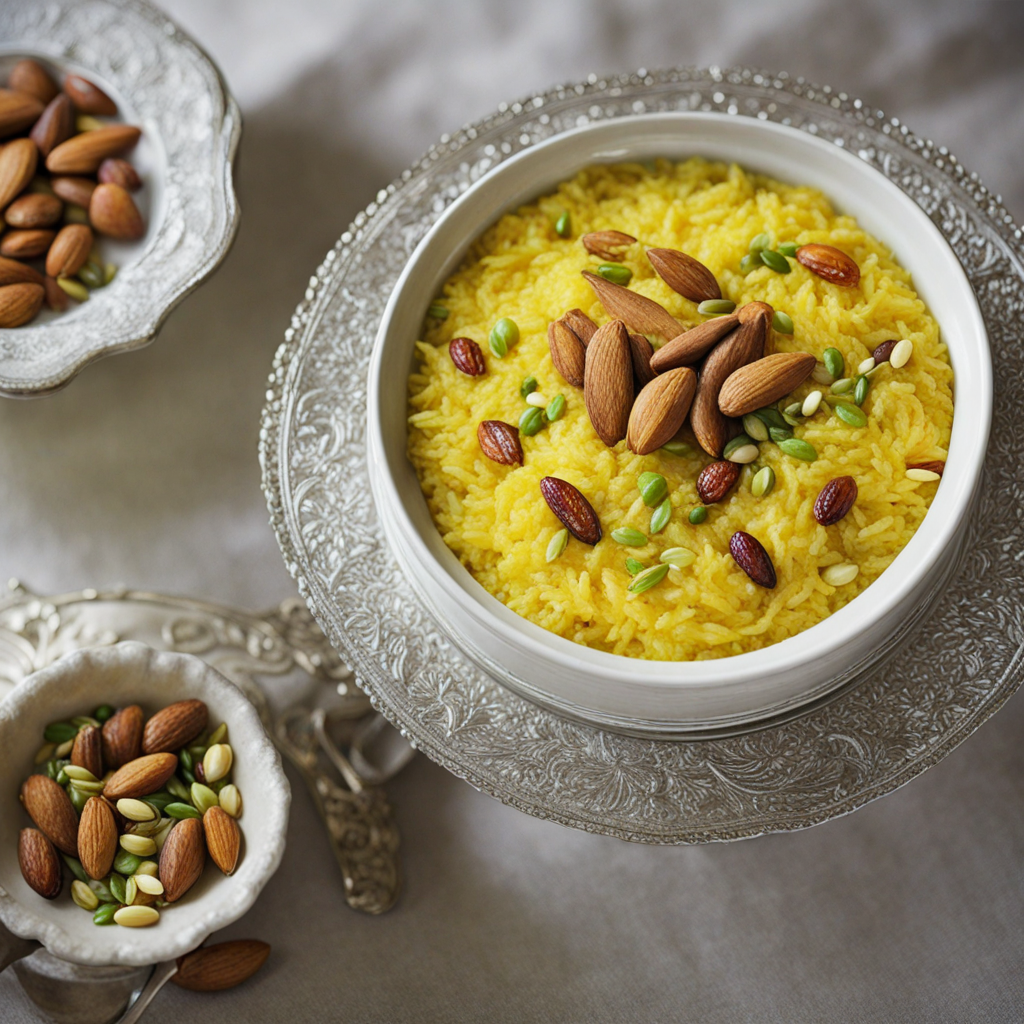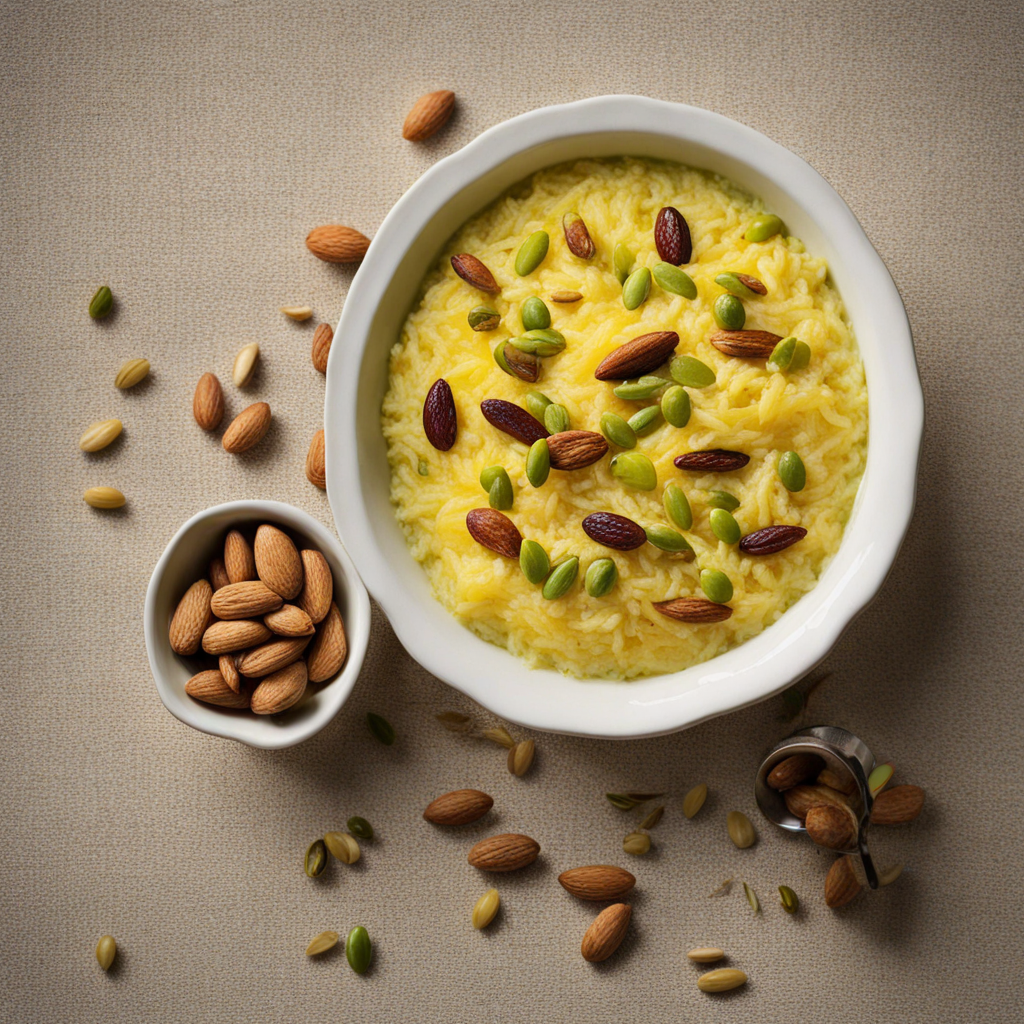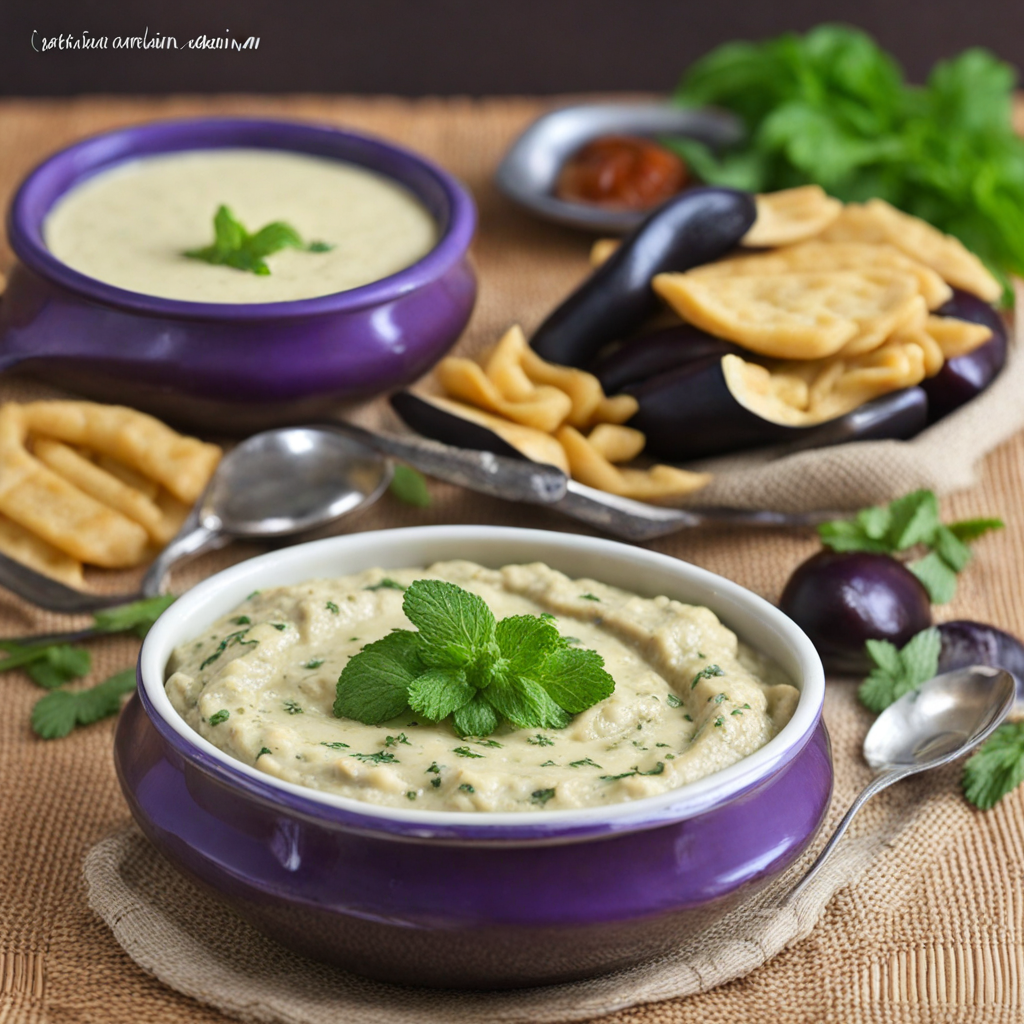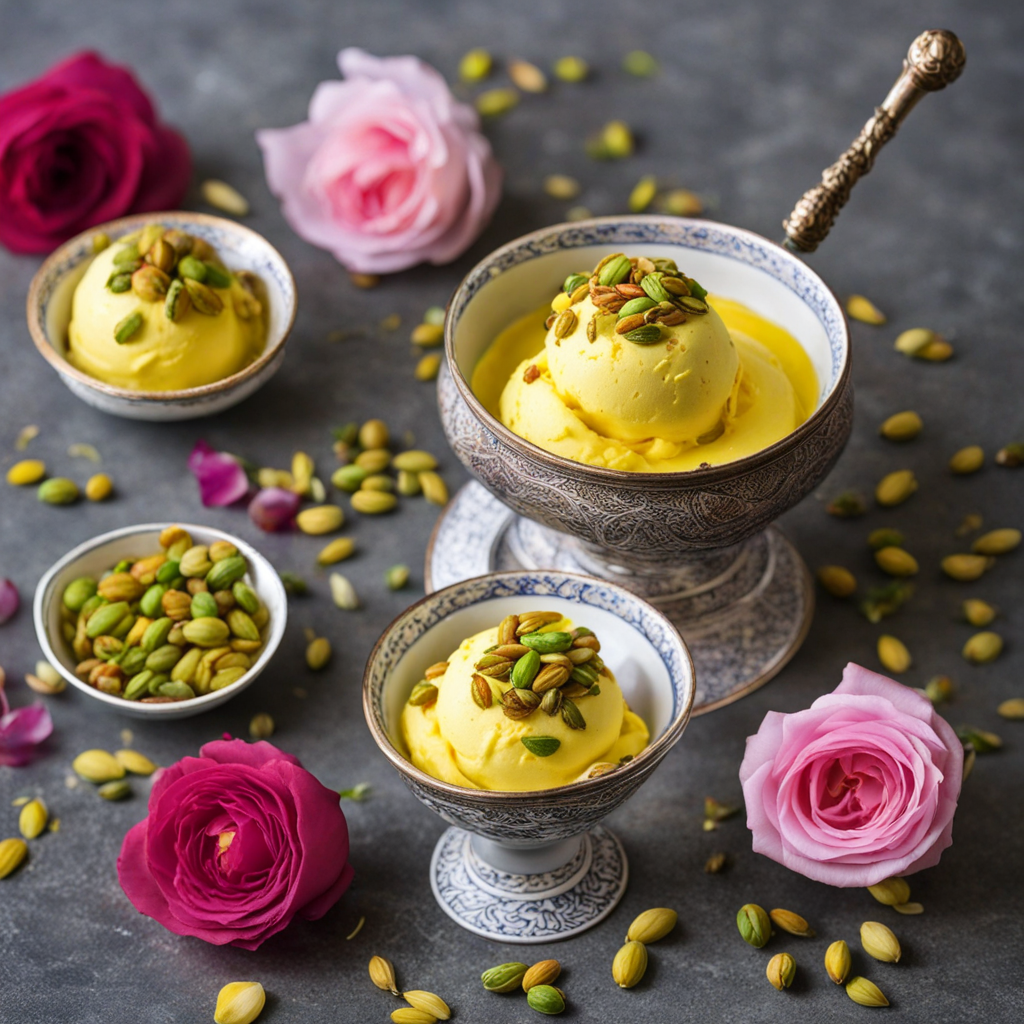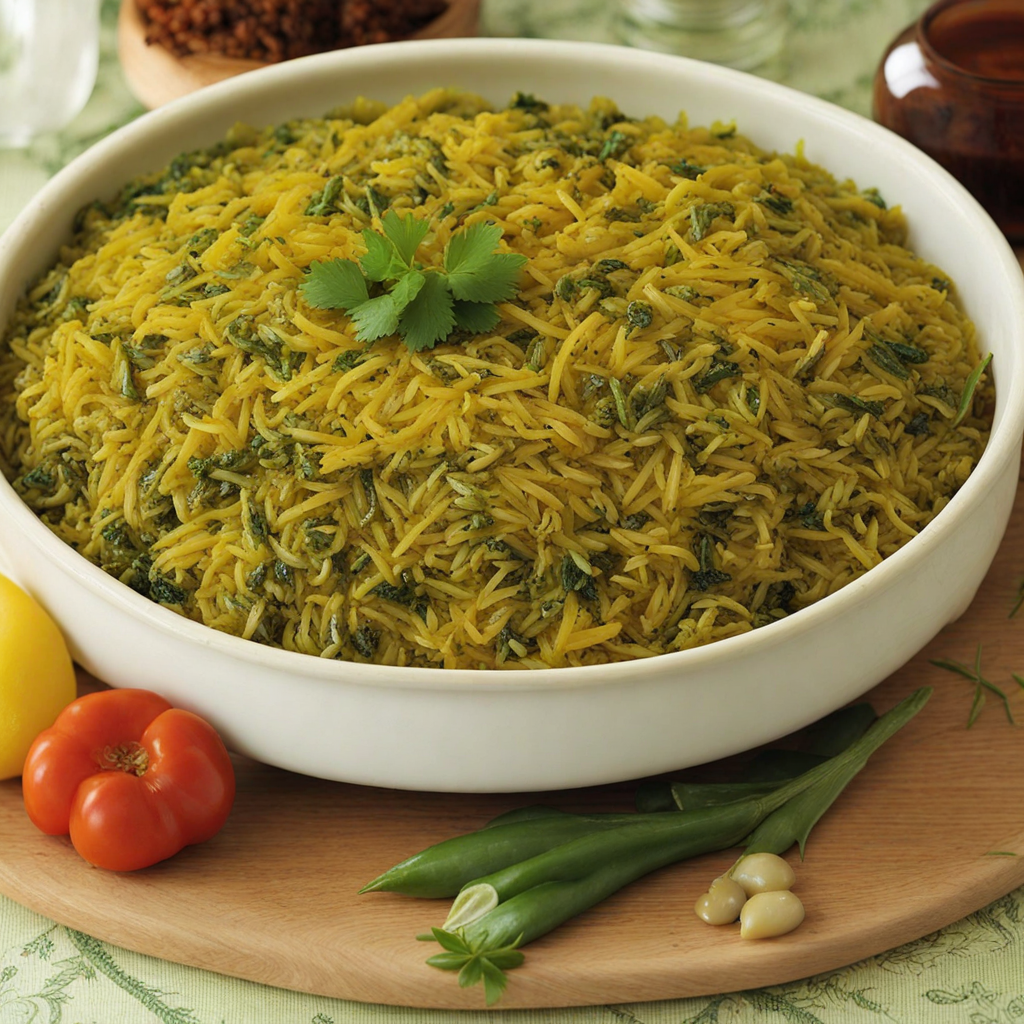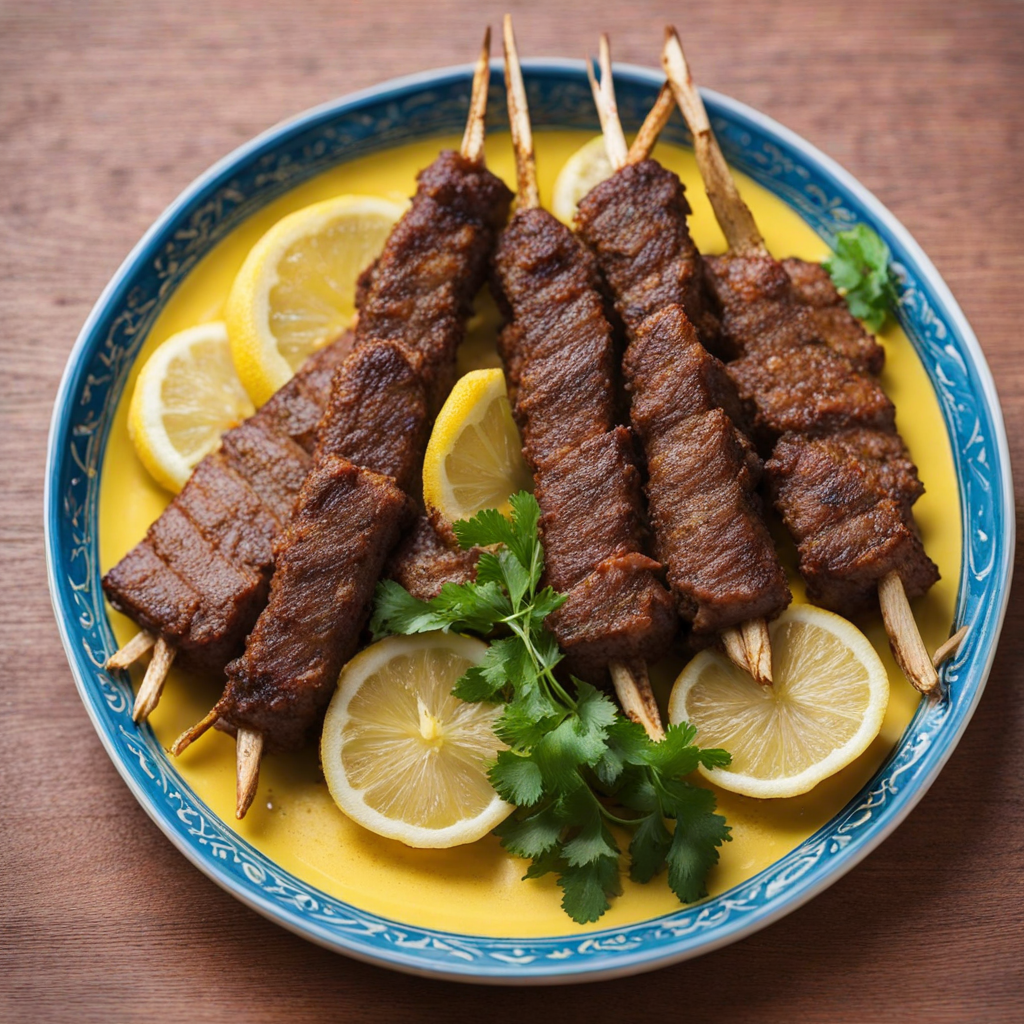Sholeh Zard
Sholeh Zard is a traditional Persian dessert that tantalizes the taste buds with its unique combination of flavors and textures. At its core, this sweet saffron rice pudding is made from simple ingredients such as rice, sugar, water, and saffron, which impart a beautiful golden hue and an aromatic fragrance. The rice is cooked until tender and creamy, creating a luscious consistency that melts in your mouth. The infusion of saffron not only elevates the dish with its distinct flavor but also adds a touch of luxury that is characteristic of Persian cuisine. To enhance the taste further, Sholeh Zard is often adorned with a sprinkle of cinnamon and topped with slivers of pistachios or almonds, providing a delightful crunch that contrasts with the smoothness of the pudding. The dessert is typically garnished with rose petals, which add a floral note and an elegant appearance that makes it a feast for both the eyes and the palate. Each spoonful is a harmonious blend of sweetness, warmth, and richness, making it a comforting treat that is perfect for special occasions or a cozy evening at home. Beyond its delightful taste, Sholeh Zard carries cultural significance in Iran, often served during religious celebrations and family gatherings. Its vibrant color and inviting aroma evoke a sense of nostalgia, recalling cherished memories and traditions. This dessert not only satisfies the sweet tooth but also offers a glimpse into the rich culinary heritage of Iran, showcasing the importance of saffron, rice, and nuts in Persian gastronomy. For anyone adventurous enough to explore new flavors, Sholeh Zard promises an unforgettable experience that will leave you longing for more.
How It Became This Dish
Origins of شله زرد شله زرد, or "Sholeh Zard," is a traditional Iranian dessert that holds a significant place in the country’s culinary history. Its origins can be traced back to ancient Persia, where the use of rice as a staple food was common. The dish is primarily made from rice, sugar, saffron, and rosewater, creating a sweet and fragrant pudding that has delighted palates for centuries. Some food historians suggest that the dish may have roots in the Persian Empire, where rice was often combined with various ingredients to create both savory and sweet dishes. The use of saffron in شله زرد is particularly noteworthy, as this precious spice has been a symbol of luxury and wealth in Persian culture for millennia. Saffron was used not just for its flavor but also for its vibrant color, which adds a visual appeal to the dish. The preparation of شله زرد is a labor-intensive process, reflecting the care and attention that goes into traditional Persian cooking. This dessert is typically cooked slowly, allowing the rice to absorb the sweet syrup and spices fully. Cultural Significance In Iranian culture, شله زرد is much more than just a dessert; it is an emblem of celebration and community. It is often prepared during significant occasions, such as weddings, religious holidays, and family gatherings. One of its most notable associations is with the celebration of Shahrivar, the last month of the Persian calendar, where families prepare شله زرد to honor the souls of their ancestors. This ritual reflects a deep respect for familial ties and the continuity of tradition. Additionally, شله زرد is frequently served during the Islamic holiday of Ramadan. After a day of fasting, sharing this sweet dish brings families and communities together, fostering a sense of unity and joy. The act of preparing and distributing شله زرد is a manifestation of hospitality, a core value in Iranian culture, showcasing the importance of sharing food and blessings with others. Development Over Time Over the centuries, the preparation and presentation of شله زرد have evolved while still retaining its traditional roots. In its early iterations, the dessert was likely simpler, focusing on the basic ingredients of rice and sugar. As trade routes expanded and cultural exchanges occurred, ingredients like rosewater and saffron became more accessible, allowing for a more complex flavor profile. The evolution of شله زرد can also be seen in its regional variations. In different parts of Iran, families have developed their unique twists on the traditional recipe. For instance, some may add nuts or dried fruits, while others might incorporate different spices to enhance the flavor. This regional diversity has enriched the dish's history, making it a canvas for culinary creativity while still adhering to its core identity. Modern Interpretations In contemporary Iran, شله زرد continues to be a cherished dessert, often found in both home kitchens and restaurants. With the influence of globalization and modern culinary trends, chefs are experimenting with the traditional recipe, introducing new textures and flavors. Some modern interpretations might include the addition of chocolate or exotic fruits, catering to evolving tastes while still paying homage to the classic dish. Moreover, as health consciousness grows among consumers, there has been a movement towards creating lighter versions of شله زرد, utilizing alternative sweeteners or gluten-free rice options. This adaptability underscores the dish's resilience and relevance in a changing culinary landscape. Global Influence and Recognition As the Iranian diaspora has spread across the globe, so too has the love for شله زرد. In countries with significant Iranian communities, such as the United States, Canada, and several European nations, this delightful dessert has found its way into cultural festivals and culinary events. Food enthusiasts and chefs alike are beginning to recognize the uniqueness of Iranian cuisine, with شله زرد often standing out due to its vibrant color and enticing aroma. Cultural exchanges have also led to a cross-pollination of culinary ideas, with شله زرد being featured in fusion dishes that blend Persian and other culinary traditions. This has not only introduced the dessert to new audiences but has also sparked interest in other aspects of Persian cuisine, encouraging a broader appreciation of its rich flavors and history. Conclusion In summary, شله زرد is a dessert that encapsulates the essence of Iranian culture, history, and identity. Its origins in ancient Persia, combined with its cultural significance during celebrations and communal gatherings, make it a dish deeply woven into the fabric of Iranian life. As it continues to evolve and adapt in modern times, شله زرد remains a testament to the enduring nature of culinary traditions and the ability of food to unite people across generations and geographies. The dish not only provides a sweet indulgence but also serves as a reminder of the rich tapestry of flavors and stories that define Iranian cuisine.
You may like
Discover local flavors from Iran


